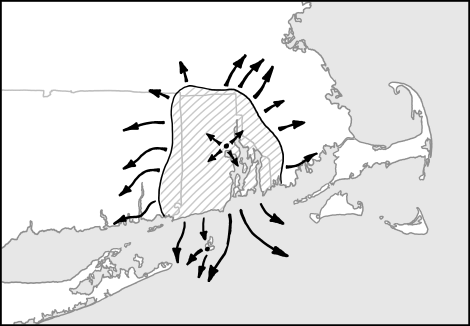What if everyone in the world gathered at TF. Green Airport and jumped at the same time? First off, this wouldn't be possible as a crowd this size would take up the entire state of Rhode Island. Second off, TF Green would have to function at 500% capacity for years in order to transport everyone to Rhode Island.

However, if everyone managed to get to Rhode Island the force of the jump wouldn't affect the earth at all. This is because the Earth outweighs all the world's humans by a factor of over ten trillion. Even with the average human vertical of half a meter, the Earth would only move by less than an atom's width if it were completely rigid and the collision was perfectly elastic. When people's feet hit the ground it delivers a lot of energy into the Earth but then it is spread out over a large area so there is no serious change. However, the sound of feet hitting the Earth would create a deafening roar that would last a few seconds. This sound could shatter eardrums and perhaps an earthquake could be formed that fell in the 4-8 magnitude range. Nevertheless, the effect of the jump would not change the Earth's orbit at all. Unfortunately, we are not that significant. However, we might collapse some electrical lines.


Comments
Post a Comment